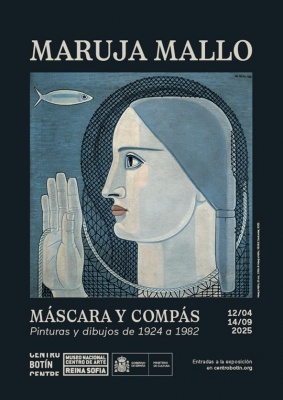Galerías y otras organizaciones que le representan
Organizaciones con obra
Profesionales con obra
Descripción del Artista
Annie Leibovitz was born in 1949 in Connecticut. She bought her first camera in the summer of 1968, when she was a student at the San Francisco Art Institute, and her early works are punctuated by images of the Bay Area landscape and photographs shot during drives the artist often took on the highways between San Francisco and Los Angeles. She switched majors from painting to photography, and while still a student, in 1970, she approached Rolling Stone magazine just three years after its inception, to offer a few of her pictures. Some of these were published, thus igniting her career as a photojournalist and launching what would develop into a symbiotic relationship between the young photographer and a magazine famous for reflecting the American zeitgeist. Leibovitz’s first major assignment was for a cover story on John Lennon.
Leibovitz became Rolling Stone's chief photographer in 1973, and by the time she left the magazine, she had amassed 142 covers and published photo essays on scores of stories, including photographing reportage from the 1975 Rolling Stones tour. Moments of freedom and an unyielding imagination fed the evolution of Leibovitz’s photography. The monumental body of work made during her thirteen-year tenure at Rolling Stone blurred the lines between celebrity and civilian, interviewer and interviewee, artist and subject, dissolving the boundaries separating Leibovitz from those she captured in her images. Documenting fellow reporters and photographers in addition to their subjects, Leibovitz highlighted those generally hidden behind the camera and brought them to the forefront.
Leibovitz recorded major political moments of the Seventies in the United States, including the 1972 presidential campaign, which she covered with the writer Hunter S. Thompson. In a haunting photograph taken when President Richard Nixon resigned, on August 9, 1974, Leibovitz’s camera records his helicopter as it takes off from the White House lawn. Her immersion within the political landscape extended to photographs from the 1976 election, when figures such as Jerry Brown and Jimmy Carter seized national attention. The artist photographed the Democratic National Convention in New York City, showcasing candid moments with Dianne Feinstein and journalists such as Sally Quinn and Dan Rather. Leibovitz’s unobtrusive lens implicates both the photographer and her colleagues as significant actors in and contributors to cultural moments.
When traveling with the Rolling Stones to document their tour of the Americas in the summer of 1975, Leibovitz entered the band’s world to such a degree that only her camera served as a reminder of her identity. Her distinctive talent for fully immersing herself in varying environments enabled a depth of direct engagement with subjects that in turn revealed their true, honest, and perhaps most vulnerable selves.
By the early 1980s, Leibovitz began using a medium-format camera that produced square photographs and was appropriate for shooting set-up portraits with a strobe light. The planned portraits were based on a creative concept that most often emerged through personal collaboration with her subjects. Evidencing a level of uncanny intimacy. this relationship can be seen in one of her most celebrated photographs, in which a naked John Lennon clutches Yoko Ono. The portrait, made on December 8, 1980, was meant to serve as an intimate emblem of the couple’s relationship. When Lennon was killed just hours after the photo was taken, the image became a powerful visual memorial.
In 1983, when Leibovitz joined the staff of the revived Vanity Fair magazine, she was established as the foremost rock music photographer and an astute documentarian of the social landscape. At Vanity Fair, and later at VOGUE magazine, she developed a sweeping body of work comprising portraits of actors, directors, writers, musicians, athletes, and political and business figures, as well as fashion photographs. Leibovitz’s portraiture reflects a signature technique she developed early in her career, as she consciously and consistently fit style to subject through collaborating with her subjects, photographing them in their homes or in a location that meant something to them, where friends, lovers, children, and other personal markers might appear.
Annie Leibovitz’s prolific output and her inventive approach to photography itself position her distinctly within the traditions and trajectories of American portraiture during the twentieth century. Her unique photographic language dovetailed with – and advanced – the medium’s evolution as a force for art making. The singularity of her vision, which included combining portraiture with photojournalism in a way that captured historical and cultural touchstones in the United States and abroad, places her within a lineage of some of her personal heroes – artists like Andy Warhol and Richard Avedon, both innovators of their mediums. Influences such as Robert Frank and Henri Cartier-Bresson inspired Leibovitz to turn the tide on photography’s reception. Combining Frank’s highly personal and emotional style of photographic reportage with Cartier-Bresson’s Surrealist and even sculptural art photography, Leibovitz embraced her own inclination toward personal journalism. The artist’s large and distinguished body of work encompasses some of the most well-known portraits of our time.
Leibovitz is the recipient of many honors. In 2006 she was made a Commandeur in the Ordre des Arts et des Lettres by the French government. The previous year, in a compilation of the forty top magazine covers of the past forty years by the American Society of Magazine Editors (ASME), she held the top two spots (#1 for her 1980 photograph of John Lennon and Yoko Ono taken for Rolling Stone on the day Lennon was shot, and #2 for her portrait of pregnant actress Demi Moore for Vanity Fair). In 2009, she received the International Center of Photography’s Lifetime Achievement Award, ASME’s first Creative Excellence Award, and the Centenary Medal of the Royal Photographic Society in London. In 2012, she was the recipient of the Los Angeles Museum of Contemporary Art Award to Distinguished Women in the Arts and the Wexner Prize. In 2013 she received the Prince of Asturias Award for Communication and Humanities. She was the inaugural recipient of the San Francisco Museum of Modern Art Contemporary Vision Award in 2015. In 2018, she received a Lifetime Achievement Award for Excellence in the Arts from the National Museum of Women in the Arts. Leibovitz has been designated a Living Legend by the Library of Congress.
Leibovitz lives and works in New York.

Creación, 03 jul de 2015
Annie Leibovitz, ganadora de la Medalla Páez de las Artes 2015
Por BLANCA GAGO GóMEZ
La Medalla Páez de las Artes es el reconocimiento más prestigioso que otorga el Fondo Venezolano Americano para las Artes (VAEA) a la contrubución en el sector artístico.

Mercado, 26 ago de 2009
Apuntes internacionales de la crisis
Por ARTEINFORMADO
Está claro que el mes de agosto no ha arrumbado la crisis. Tampoco en el mercado del arte. Y para demostrarlo un par de noticias: la casa de subastas Christie''s ...

Grandes Eventos, 24 ene de 2009
Comunidad de Madrid destina 8 M. de Euros a exposiciones
Por ARTEINFORMADO
Un total de 8 M. de Euros destinará este año la Comunidad de Madrid a mantener su programa expositivo, según ha hecho público esta semana el consejero de Cultura y ...

Exposición. 12 abr de 2025 - 14 sep de 2025 / Centro Botín / Santander, Cantabria, España
Maruja Mallo: Máscara y compás. Pinturas y dibujos de 1924 a 1982

Formación. 08 may de 2025 - 17 may de 2025 / Museo Nacional Centro de Arte Reina Sofía (MNCARS) / Madrid, España